Nissan Versa (N17): Basic inspection
Work Procedure
1.INSPECTION START
1. Check service records for any recent repairs that may indicate a related malfunction, or a current need for scheduled maintenance.
2. Open engine hood and check the following:
- Harness connectors for improper connections
- Wiring harness for improper connections, pinches and cut
- Vacuum hoses for splits, kinks and improper connections
- Hoses and ducts for leaks
- Air cleaner clogging
- Gasket
3. Confirm that electrical or mechanical loads are not applied.
- Headlamp switch is OFF.
- Air conditioner switch is OFF.
- Rear window defogger switch is OFF.
- Steering wheel is in the straightahead position, etc.
4. Start engine and warm it up until engine coolant temperature indicator points to the middle of gauge.
Ensure engine stays below 1,000 rpm.
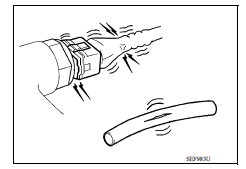
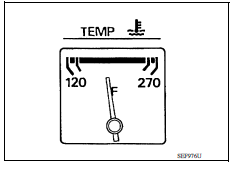
5. Run engine at about 2,000 rpm for about 2 minutes under no load.
6. Make sure that no DTC is displayed with CONSULT or GST.
Is any DTC detected?
YES >> GO TO 2.
NO >> GO TO 3.
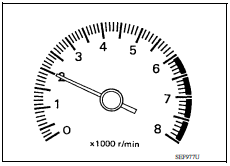
2.REPAIR OR REPLACE
Repair or replace components as necessary according to corresponding Diagnostic Procedure.
>> GO TO 3
3.CHECK TARGET IDLE SPEED
1. Run engine at about 2,000 rpm for about 2 minutes under no load.
2. Rev engine (2,000 to 3,000 rpm) two or three times under no load, then run engine at idle speed for about 1 minute.
3. Check idle speed.
For procedure, refer to EC, "Inspection".
For specification, refer to EC, "Idle Speed".
Is the inspection result normal?
YES >> GO TO 10.
NO >> GO TO 4.
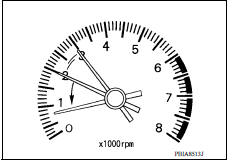
4.PERFORM ACCELERATOR PEDAL RELEASED POSITION LEARNING
- Stop engine.
- Perform EC, "Work Procedure".
>> GO TO 5.
5.PERFORM THROTTLE VALVE CLOSED POSITION LEARNING
Perform EC, "Work Procedure".
>> GO TO 6.
6.PERFORM IDLE AIR VOLUME LEARNING
Perform EC, "Work Procedure".
Is Idle Air Volume Learning carried out successfully?
YES >> GO TO 7.
NO >> Follow the instruction of IDLE AIR VOLUME LEARNING. Then GO TO 4.
7.CHECK TARGET IDLE SPEED AGAIN
- Start engine and warm it up to normal operating temperature.
- Check idle speed.
For procedure, refer to EC, "Inspection".
For specification, refer to EC, "Idle Speed".
Is the inspection result normal?
YES >> GO TO 10.
NO >> GO TO 8.
8.DETECT MALFUNCTIONING PART
Check the Following.
- Check intake camshaft position sensor (PHASE) and circuit.
- Check crankshaft position sensor (POS) and circuit.
Is the inspection result normal?
YES >> GO TO 9.
NO >> Repair or replace. Then GO TO 4.
9.CHECK ECM FUNCTION
- Substitute another knowngood ECM to check ECM function. (ECM may be the cause of an incident, but this is a rare case.)
- Perform initialization and registration of all NATS ignition key IDs.
>> GO TO 4.
10.CHECK IGNITION TIMING
- Run engine at idle.
- Check ignition timing with a timing light.
Timing indicator (1)
Is the inspection result normal?
YES >> GO TO 19.
NO >> GO TO 11.
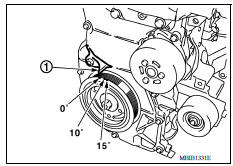
11.PERFORM ACCELERATOR PEDAL RELEASED POSITION LEARNING
- Stop engine.
- Perform EC, "Work Procedure".
>> GO TO 12.
12.PERFORM THROTTLE VALVE CLOSED POSITION LEARNING
Perform EC "Work Procedure".
>> GO TO 13.
13.PERFORM IDLE AIR VOLUME LEARNING
Perform EC, "Work Procedure".
Is idle air volume learning carried out successfully?
YES >> GO TO 14.
NO >> Follow the instruction of IDLE AIR VOLUME LEARNING. Then GO TO 4.
14.CHECK TARGET IDLE SPEED AGAIN
- Start engine and warm it up to normal operating temperature.
- Check idle speed.
For procedure, refer to EC, "Inspection".
For specification, refer to EC, "Idle Speed".
Is the inspection result normal?
YES >> GO TO 15.
NO >> GO TO 17.
15.CHECK IGNITION TIMING AGAIN
- Run engine at idle.
- Check ignition timing with a timing light.
For procedure, refer to EC, "Inspection".
For specification, refer to EC, "Ignition Timing".
Timing indicator (1)
Is the inspection result normal?
YES >> GO TO 19.
NO >> GO TO 16.
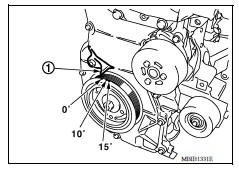
16.CHECK TIMING CHAIN INSTALLATION
Check timing chain installation. Refer to EM, "Removal and Installation".
Is the inspection result normal?
YES >> GO TO 17.
NO >> Repair the timing chain installation. Then GO TO 4.
17.DETECT MALFUNCTIONING PART
Check the following.
- Check intake camshaft position sensor (PHASE) and circuit. Refer to EC "DTC Logic".
- Check crankshaft position sensor (POS) and circuit. Refer to EC "DTC Logic".
Is the inspection result normal?
YES >> GO TO 18.
NO >> Repair or replace. Then GO TO 4.
18.CHECK ECM FUNCTION
- Substitute another knowngood ECM to check ECM function. (ECM may be the cause of an incident, but this is a rare case.)
- Perform initialization of NATS system and registration of all NATS ignition key IDs.
>> GO TO 4.
19.INSPECTION END
If ECM is replaced during this BASIC INSPECTION procedure, perform EC, "Work Procedure".
>> INSPECTION END
 Mixture ratio selflearning value
clear
Mixture ratio selflearning value
clear
Description This describes how to erase the mixture ratio selflearning value. For the actual procedure, follow the instructions in "Diagnosis Procedure". Work Procedure 1.START With CONSULT ...
Fuel pressure check
Work Procedure FUEL PRESSURE RELEASE 1.FUEL PRESSURE RELEASE With CONSULT Turn ignition switch ON. Perform "FUEL PRESSURE RELEASE" in "WORK SUPPORT" mode with CONSULT. Start engine. Aft ...
Other materials:
U0073 Communication bus a off
DTC Logic
DTC
Trouble diagnosis name
DTC detecting condition
Possible causes
U0073
Control Module Communication
Bus "A" Off
When the ignition switch is ON,
TCM detects a bus-off error
continuously for 2 seconds or
more.
Harness or connector
(CA ...
Id registration procedure
Description
This procedure must be performed after replacing wheels, transmitters or the
BCM, or rotating wheels.
Work Procedure
NOTE:
The Signal Tech II Tool (J-50190) can be used to perform the following
functions. Refer to the Signal Tech II
User Guide for additional information.
Ac ...
Categories
- Manuals Home
- Nissan Versa Owners Manual
- Nissan Versa Service Manual
- Video Guides
- Questions & Answers
- External Resources
- Latest Updates
- Most Popular
- Sitemap
- Search the site
- Privacy Policy
- Contact Us
0.0066
